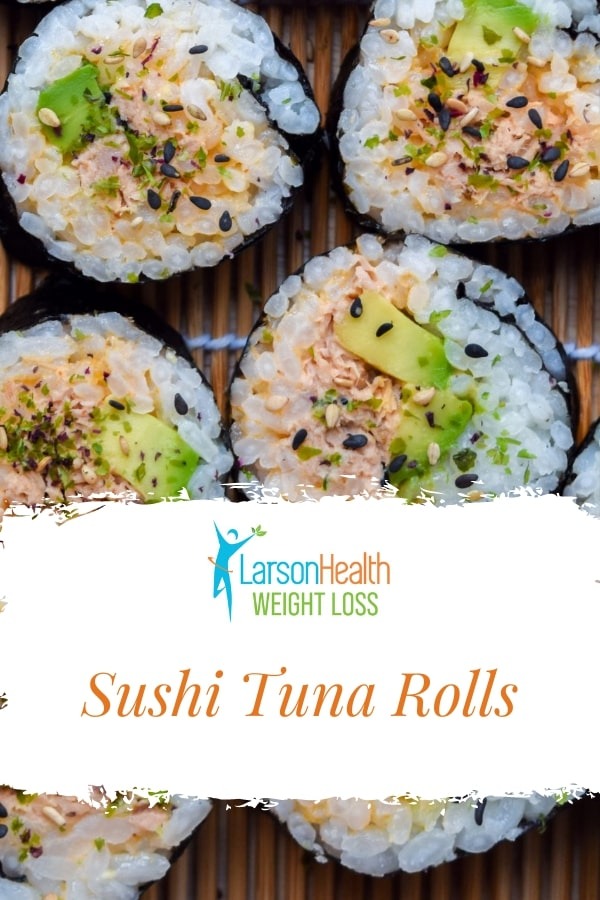
1 servings
Ingredients:
• ¾ cup liquid egg substitute• Cooking spray
• 1 cup frozen cauliflower rice
• 1 tbsp light cream cheese
• 5 oz. canned tuna, well-drained
• 1½ tbsp reduced-fat mayonnaise
• ½ cup julienned cucumber
• ½ tsp light soy sauce
• 4, (0.10-oz.) regular sheets
Directions:
1. Spray a small (1.6 liter) microwave-safe casserole dish with non-stick cooking spray. Pour the egg substitute into the dish, cover and microwave on high for 2 to 2 ½ minutes or until set but slightly moist.2. Using a rubber spatula, gently transfer the cooked egg to a cutting board. Let cool, then slice in half and set aside.
3. Cook cauliflower rice according to package directions. If watery, squeeze cauliflower rice in a clean kitchen or cheese cloth to remove excess moisture.
4. Combine the cauliflower rice and cream cheese in a bowl. Thoroughly stir, then set aside.
5. In another bowl, combine the tuna and mayonnaise; stir and set aside.
6. Cover a clean work surface with two pieces of plastic wrap. Lay 2 sheets of nori on top of one another, shiny side down, on each of the plastic wrap pieces.
7. Spread a portion of the cauliflower rice-cream cheese mixture (½ of the mixture if making the recipe for 1 serving) in the center of each nori. Using a spatula, spread the rice mixture evenly over the nori, leaving a half-inch border around the edges uncovered.
8. Spread a portion of the tuna-mayonnaise mixture (½ of the mixture if making the recipe for 1 serving) in the center of each nori creating a line from side to side.
9. Spread a portion of the sliced cooked egg and sliced cucumber (½ of each if making the recipe for 1 serving) on top of the tuna, side to side.
10. Drizzle a little soy sauce (about ¼ tsp for 1 serving) evenly over the tuna, egg and cucumber.
11. Starting at the bottom edge, fold the nori over the filling and gently pull back to form a tight cylinder. Continue rolling until you reach the uncovered top edge. Lightly moisten the uncovered edge with water and continue rolling to form the sushi roll.
12. Repeat steps 7-10 with remaining ingredients if making 1 serving (repeat steps 6-9 as needed if making more than 1 serving).
13. Using a sharp knife, slice each sushi roll into 6 - 8 even pieces.
 Add Row
Add Row  Add
Add 










Write A Comment